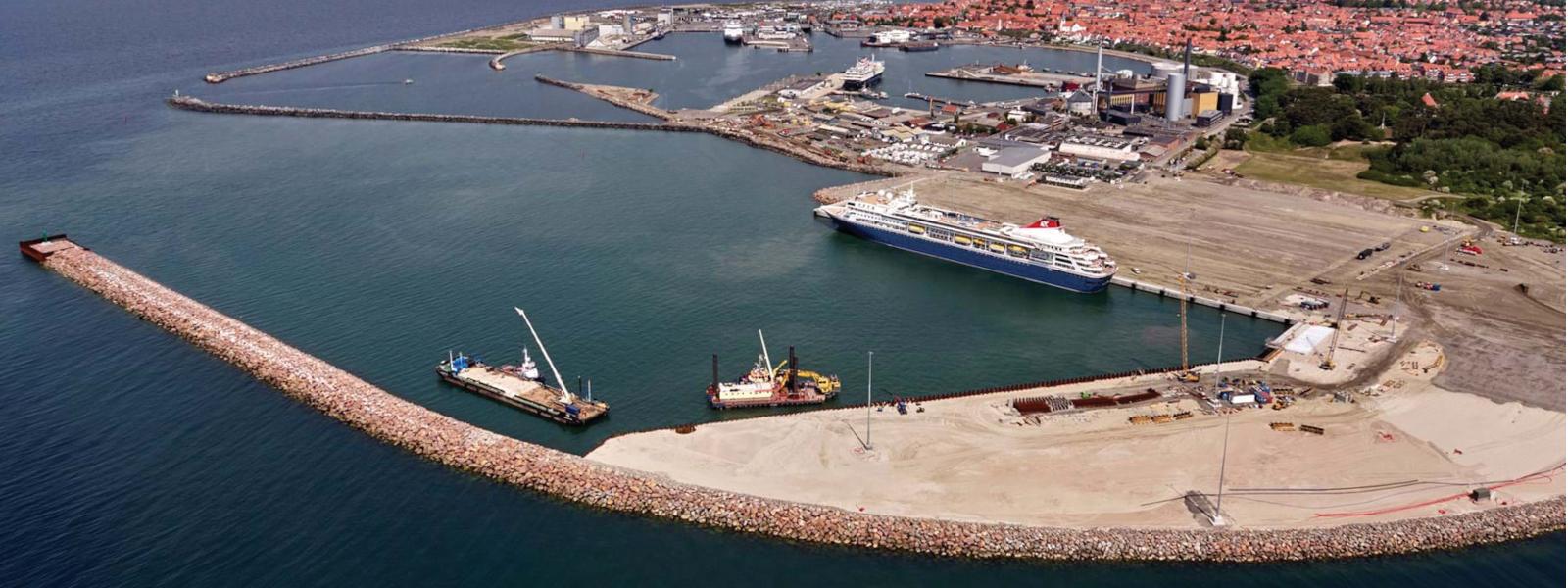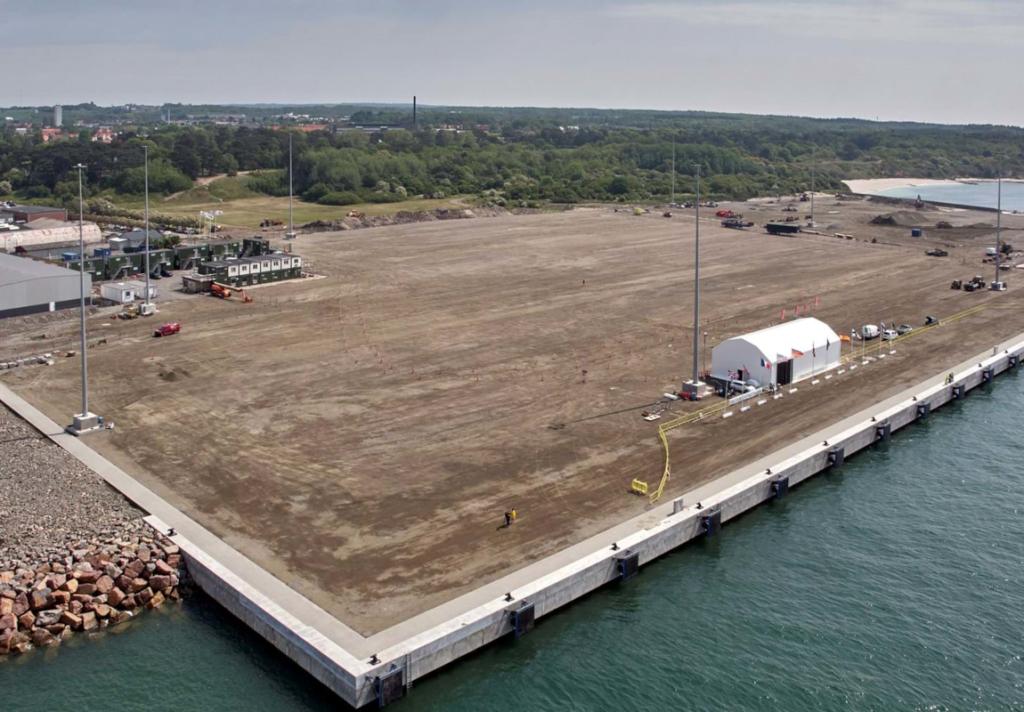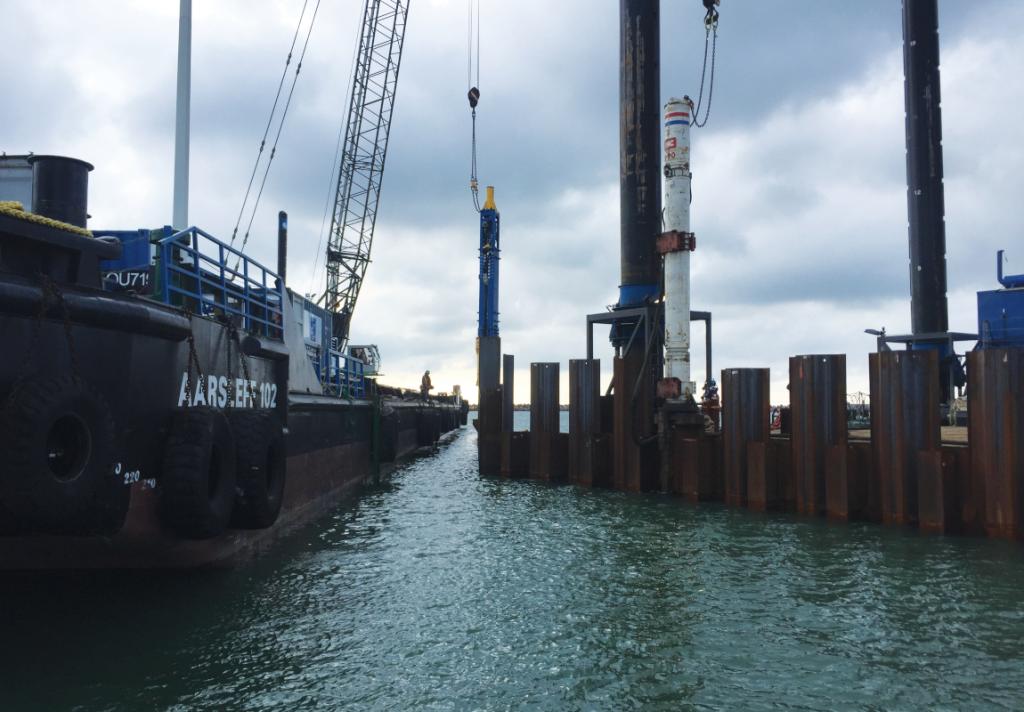Extension of Port of Rønne - DK | 2019
Quay 33 & 34 extension project at Port of Rønne
Rønne is the largest city on the island of Bornholm in Denmark, with a population of around 14 000 inhabitants. The island lies eastern of Copenhagen, in the Baltic sea, and is a popular holiday escape for Scandinavian residents, fond of the sandy beaches and the sunny weather in summertime. Rønne’s port is the largest on the island and had as many as 32 quays in operation before its extension, which consisted in the construction of a breakwater and two quay walls in a new zone of the port.
The 1 150 m long new breakwater was built first, and the new quay walls, which were inaugurated in October 2019, are Quay 33, a heavy-duty quay, and Quay 34, a multipurpose quay. Both have a dredge line at -11.0 m during the first operation phase, but the final design water depth is -13.0 m. Quay 33 is around 280 m long, whereas Quay 34 is 300 m long and can accommodate cruise ships up to 350 meters. A 60-meter-long Ro-Ro ramp connects the two quay walls.
Download
 English
English





